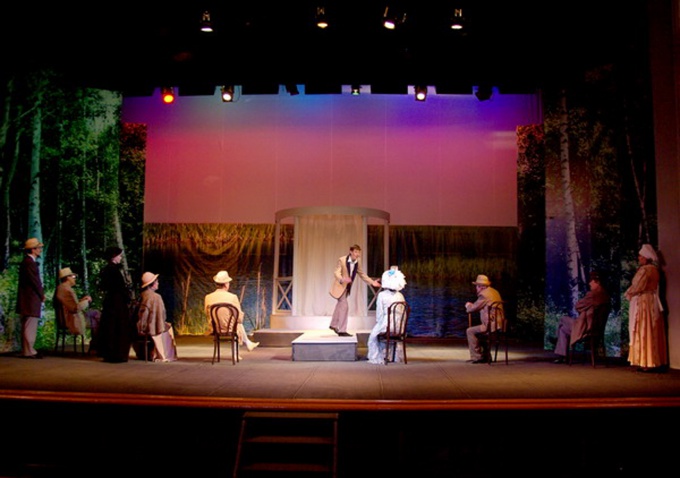You will need
- -the canvas;
- -a wooden beam;
- installation stapler;
- -gouache;
- -latex paint;
- -twine;
- -threads;
- -needle;
- -scissors;
- -hacksaw;
- -the drawing paper;
- -the range;
- pencil;
- -nails;
- -door hinges;
- -wire;
- -carbines;
- -a hammer.
Instruction
1
All the scenery can be divided into 3 parts. This is the heel, side sets and Central sets. The backdrop is a cloth with the image of the background scene or screen for rear projection (slide or film projection), or a neutral background. The side panel is the interior of the scene (walls of houses, trees, forests, walls, etc.). The Central decoration must conform to the master plan stage action. It can be a furniture fire, the center of the square, the section of the road, etc.
2
In any case, the scenery needs to match the Director's vision. They are dictated by the plot of a dramatic work. So first develop the scenery for each scene and draw them separately in the form of a pencil drawing on a sheet of drawing paper.
3
Making decorations start with the mandatory component from the heel. Depending on the capacity of the scene using existing fasteners back or made wooden frame from lumber nailed together. To the frame attach the fabric with the mounting of the stapler.
4
The replaceable heel can be done in the form of banner with top and bottom rail. Such backdrops may be several, one for each performance. Prime the canvas with latex paint. Sign the back of the gouache.
5
Side panels are manufactured of timber in the form of carcasses. They can be joined to each other using door hinges, allowing you to stack them for transportation. Wooden frames can have a complex structure — the shape of buildings, taking into account Windows, additional doors, etc. Doors are made to provide care of the actor behind the scenes or out on stage.
6
Frame fit an fabric using a stapler Assembly. Prime the fabric with latex paint. Exactly the same as the heel, sign gouache.
7
The side panels should be well secured for the construction stage in order to avoid them from falling or shifting during action. Used for attaching rope, twine or wire. If you plan a change of scenery during the performance, you need to use quick couplings. In this case, instead of use the wire ropes and carabiners.
8
As the Central decorations use real objects with which the actors directly act. It can be furniture, tools and other things that meet the Director's plan. They need to suit their style, combined with the other decorations in color and does not interfere with the movement of actors on stage.
Note
The heel may be small, in the form of a screen or screen. It all depends on the Director's vision,
When placing decorations, you must consider lighting and available lighting equipment.
For home play all the scenery, except the Central, can be done on the screen, in the same way obtenus their canvas.
When placing decorations, you must consider lighting and available lighting equipment.
For home play all the scenery, except the Central, can be done on the screen, in the same way obtenus their canvas.
Useful advice
In conditional theatre, the scenery can be minimized. In the role of elements of the set can be the actors themselves, and the movement of scenery may be conducted without a curtain by the participants of the performance.
